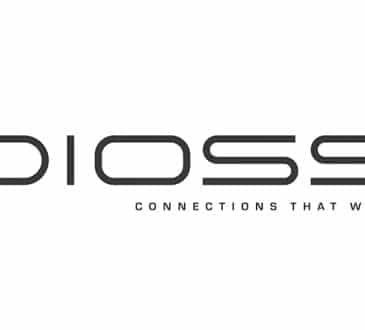The 3 Key Blockers to Collaborative Communication

“A Stanford study of 1,100 companies found that organizations promoting collaboration among their employees were five times more likely to be high performing. Other research shows that businesses with a collaboration strategy were twice as likely to outgrow their competitors, while their collaborating employees saw gains in efficiency, quality of work, innovation, and overall job satisfaction.” ~ Forbes, 4 Ways Collaboration Has Fundamentally Changed.
Collaborative communication in the workplace refers to the exchange of information and ideas between team members in order to achieve a common goal. This type of communication takes time and involves active participation, engagement, and mutual support among colleagues, in an environment that has high trust and fosters cooperation and teamwork.
“We believe that organisations need to put people and relationships, before process and progress”.
A key challenge in achieving collaborative communication is managing different communication styles and perspectives. People have unique backgrounds, experiences, values, and ways of expressing themselves which can lead to misunderstandings and conflicting viewpoints. Additionally, remote work and cultural differences can also impact the ability to effectively communicate and collaborate.
In today’s world, with the rise of flexible work environments and the widespread use of digital communication tools, there are several barriers to effective communication that need to be addressed.
The Key Barriers
- Diminished connection in a hybrid environment
Today we need to embrace the hybrid work environment and the new world of work. For many this has contributed to a reduction in collaborative communication.Some of the factors that have diminished connection include:
a) Physical distance: When employees are working from different locations, it can be harder to communicate effectively and build strong relationships. There is a reduction in incidental interactions and impromptu conversations. If individuals aren’t intentional about remaining connected, and purposefully reaching out to their peers regularly, then the distance can lead to friction and misunderstanding.
b) Technical difficulties: Technical difficulties, such as poor video and audio quality, can also hinder communication and collaboration in a hybrid environment. This can make it harder for team members to effectively exchange ideas and work together. Every person has different skill and ability when it comes to using technology and this needs to be considered.
c) Lack of cultural alignment: When employees are working in different locations and are not physically present in the office, it can be harder to build a strong organisational culture and align employees around shared goals and values. In-person interactions, such as team meetings and social events, helps to build culture and while they can still take place online the environment is not always conducive to fun, joy, and interpersonal connection.
Through promoting collaborative communication in this new environment and leveraging technology, planning face to face interactions, promoting regular check-ins, and encouraging virtual team-building activities, teams can remain connected regardless of the environment.
- Ignorance to diversity of thought
The way each of us sees and interacts with the world is unique – it is what we each believe to be true…but is it really the truth…the whole truth?While the information shared in this article might help to inform your truth it certainly isn’t the only truth. Being open to other ideas and perspectives is what supports diversity of thinking and where creativity and innovation thrive. It also helps to build connection, trust, and respect between individuals.
When teams lack diversity, this can result in a homogeneous group with limited perspectives, experiences, and ideas. This can lead to communication breakdowns, misunderstandings, and a lack of empathy for others’ perspectives. In addition, a lack of appreciating diversity can also lead to an environment in which certain groups are marginalised, and their voices are not heard or valued. This can result in a culture in which some employees feel disengaged and less motivated to contribute, leading to decreased collaboration and reduced innovation.
When a team embraces diversity and promotes inclusiveness, it creates an environment in which everyone feels valued and heard. This can lead to better communication, as team members are more likely to understand and appreciate different perspectives and are more likely to collaborate effectively towards shared goals.
By creating an environment in which everyone feels valued and heard, teams can foster a culture of engagement and collaboration, leading to increased success and effectiveness.
- Underappreciation of skills & experience
Most employees in the workplace today have experience and skills that extend far beyond their current role. Some have worked in different departments, different organisations, and even different industries – all of which have offered experiences and skills that the employee will take with them throughout their career.Where there is a lack of appreciation, for the unique experiences and skills of individuals, it can contribute to poor communication and decreased collaboration. They may be less likely to engage and deliver their best work and over time feel disconnected and lose motivation.
Having appreciation for the whole person, what their experience and skills are, along with their unique attributes, will encourage curiosity and foster greater input from a variety of perspectives. This is where creativity and innovation thrive and where communication is open and dynamic.
When leaders adopt an inclusive and appreciative approach they recognise and value the unique skills and experiences of everyone. They provide opportunities for employees to share their ideas, understand different approaches, recognise, and reward individual contributions and promote a culture of curiosity and optimism.
Consider these 3 questions:
- How well are you communicating with your team, peers, upline and external stakeholders?
- How effectively are the individuals in your team and the teams within your organisation communicating?
- Right now, how does your organisation embrace diversity of thinking and the opinions and skills of everyone?
By answering these questions this can provide insight into the level of collaboration and communication within a team and help identify key areas for improvement.
Overall, organisations with high levels of collaboration and open communication are usually more effective, innovative, and enjoyable places to work. When we foster a culture of collaboration and open communication, organisations can improve their outcomes, build stronger relationships, and enhance their overall success.
Written by Renée Giarrusso.
Have you read?
Largest Hotel Chains in the World, 2023.
Best Residence by Investment Programs for 2023.
International Financial Centres Ranking, 2023.
Best Citizenship by Investment (CBI) for 2023.
The World’s Most Valuable Unicorns, 2023.
Ready to join the CEOWORLD magazine Executive Council– Find out if you are eligible to apply.
Add CEOWORLD magazine to your Google News feed.
Follow CEOWORLD magazine headlines on: Google News, LinkedIn, Twitter, and Facebook.
Copyright 2024 The CEOWORLD magazine. All rights reserved. This material (and any extract from it) must not be copied, redistributed or placed on any website, without CEOWORLD magazine' prior written consent. For media queries, please contact: info@ceoworld.biz








